Showing Spotlights 889 - 896 of 2779 in category All (newest first):
 Researchers have explored the role of intrinsic bulk electrical conductivity and surface polarity in the electrocatalysis of polysulfide redox reactions. They synthesized highly porous and conductive titanium carbide (TiC)-based composite cathode materials and to assemble lithium-sulfur (Li-S) batteries with high sulfur loading. Li-S cells employing the as-synthesized TiC-based cathode exhibited reduced internal resistance, enhanced energy efficiency, and prolonged service life.
Researchers have explored the role of intrinsic bulk electrical conductivity and surface polarity in the electrocatalysis of polysulfide redox reactions. They synthesized highly porous and conductive titanium carbide (TiC)-based composite cathode materials and to assemble lithium-sulfur (Li-S) batteries with high sulfur loading. Li-S cells employing the as-synthesized TiC-based cathode exhibited reduced internal resistance, enhanced energy efficiency, and prolonged service life.
Oct 10th, 2016
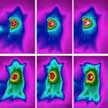 Microwave hyperthermia is one of the most important clinical thermotherapy techniques due to the instinctive advantages of non-intrusive heating model, fair depth of penetration in tissues and ideal potential of killing tumor cells without surgical risks or toxicity of chemotherapy. Scientists have now developed a novel multifunctional nanoplatform to combine the non-thermal and thermal effects of microwave to achieve enhanced thermal/chemo cancer therapy under mild microwave irradiation.
Microwave hyperthermia is one of the most important clinical thermotherapy techniques due to the instinctive advantages of non-intrusive heating model, fair depth of penetration in tissues and ideal potential of killing tumor cells without surgical risks or toxicity of chemotherapy. Scientists have now developed a novel multifunctional nanoplatform to combine the non-thermal and thermal effects of microwave to achieve enhanced thermal/chemo cancer therapy under mild microwave irradiation.
Oct 7th, 2016
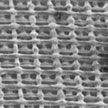 Carbon nanotube enabled nanocomposites have received much attention as a highly attractive alternative to conventional composite materials due to their mechanical, electrical, thermal, barrier and chemical properties such as electrical conductivity, increased tensile strength, improved heat deflection temperature, or flame retardancy. In new work, researchers report the fabrication of highly conductive carbon nanotube/polylactic acid nanocomposites used as 3D printable conductive inks for fabrication of conductive scaffold structures applicable as liquid sensors.
Carbon nanotube enabled nanocomposites have received much attention as a highly attractive alternative to conventional composite materials due to their mechanical, electrical, thermal, barrier and chemical properties such as electrical conductivity, increased tensile strength, improved heat deflection temperature, or flame retardancy. In new work, researchers report the fabrication of highly conductive carbon nanotube/polylactic acid nanocomposites used as 3D printable conductive inks for fabrication of conductive scaffold structures applicable as liquid sensors.
Oct 6th, 2016
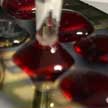 Researchers demonstrate a completely new micro-array design that is looking at capture and detection of circulating tumor cells (CTCs) from an entirely new perspective. As an alternative to invasive biopsies, capturing CTCs is of great interest for evaluating cancer dissemination, predicting patient prognosis, and also for the evaluation of therapeutic treatments, representing a reliable potential alternative to invasive biopsies and subsequent proteomic and functional genetic analysis. The new approach is based on a static isolation in the form of micro-arrays of single-walled carbon nanotubes.
Researchers demonstrate a completely new micro-array design that is looking at capture and detection of circulating tumor cells (CTCs) from an entirely new perspective. As an alternative to invasive biopsies, capturing CTCs is of great interest for evaluating cancer dissemination, predicting patient prognosis, and also for the evaluation of therapeutic treatments, representing a reliable potential alternative to invasive biopsies and subsequent proteomic and functional genetic analysis. The new approach is based on a static isolation in the form of micro-arrays of single-walled carbon nanotubes.
Oct 5th, 2016
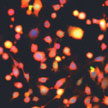 The intravenous iron-replacement product ferumoxytol and other iron oxide nanoparticles are being used for treating iron deficiency, as contrast agents for magnetic resonance imaging, and as drug carriers. In a new study, researchers have shown an intrinsic therapeutic effect of ferumoxytol on the growth of early mammary cancers and lung cancer metastases in liver and lungs. They showed that ferumoxytol can activate the immune system to attack cancer cells. This is the first description of an intrinsic therapeutic effect of iron oxide nanoparticles against cancer.
The intravenous iron-replacement product ferumoxytol and other iron oxide nanoparticles are being used for treating iron deficiency, as contrast agents for magnetic resonance imaging, and as drug carriers. In a new study, researchers have shown an intrinsic therapeutic effect of ferumoxytol on the growth of early mammary cancers and lung cancer metastases in liver and lungs. They showed that ferumoxytol can activate the immune system to attack cancer cells. This is the first description of an intrinsic therapeutic effect of iron oxide nanoparticles against cancer.
Oct 4th, 2016
 Researchers have developed an enteric micromotor consisting of a magnesium-based motor body with an enteric polymer coating. These motors, aimed controlling and enhancing site-specific delivery in the gastrointestinal tract, consist of water-powered magnesium-based tubular micromotors coated with an enteric polymer layer. The microscale robot can deliver payload to particular location via dissolution of their enteric polymeric coating to activate their propulsion at the target site towards localized tissue penetration and retention.
Researchers have developed an enteric micromotor consisting of a magnesium-based motor body with an enteric polymer coating. These motors, aimed controlling and enhancing site-specific delivery in the gastrointestinal tract, consist of water-powered magnesium-based tubular micromotors coated with an enteric polymer layer. The microscale robot can deliver payload to particular location via dissolution of their enteric polymeric coating to activate their propulsion at the target site towards localized tissue penetration and retention.
Sep 27th, 2016
 The optical manipulation of plasmonic nanoparticles has advantages for applications such as nanofabrication, drug delivery and biosensing. To that end, researchers have been developing techniques for the reversible assembly of plasmonic nanoparticles that can be used to modulate their structural, electrical and optical properties. The latest such technique is a low-power assembly that is enabled by thermophoretic migration of nanoparticles due to the plasmon-enhanced photothermal effect and the associated enhanced local electric field over a plasmonic substrate.
The optical manipulation of plasmonic nanoparticles has advantages for applications such as nanofabrication, drug delivery and biosensing. To that end, researchers have been developing techniques for the reversible assembly of plasmonic nanoparticles that can be used to modulate their structural, electrical and optical properties. The latest such technique is a low-power assembly that is enabled by thermophoretic migration of nanoparticles due to the plasmon-enhanced photothermal effect and the associated enhanced local electric field over a plasmonic substrate.
Sep 21st, 2016
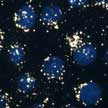 Currently available toxicity screening methods are not fully compatible with nanotoxicity studies. Due to the unique physicochemical characteristics of nanomaterials, conventional cytotoxicity assays have been shown to create complications in nanotoxicity evaluation. In a new study, researchers used surface-enhanced Raman scattering (SERS) to evaluate the cytotoxicity of nanomaterials. They show that SERS can be used as an alternative nanotoxicity evaluation method especially for the nanomaterials that have been shown to create complications in conventional cytotoxicity assays.
Currently available toxicity screening methods are not fully compatible with nanotoxicity studies. Due to the unique physicochemical characteristics of nanomaterials, conventional cytotoxicity assays have been shown to create complications in nanotoxicity evaluation. In a new study, researchers used surface-enhanced Raman scattering (SERS) to evaluate the cytotoxicity of nanomaterials. They show that SERS can be used as an alternative nanotoxicity evaluation method especially for the nanomaterials that have been shown to create complications in conventional cytotoxicity assays.
Sep 20th, 2016
 Researchers have explored the role of intrinsic bulk electrical conductivity and surface polarity in the electrocatalysis of polysulfide redox reactions. They synthesized highly porous and conductive titanium carbide (TiC)-based composite cathode materials and to assemble lithium-sulfur (Li-S) batteries with high sulfur loading. Li-S cells employing the as-synthesized TiC-based cathode exhibited reduced internal resistance, enhanced energy efficiency, and prolonged service life.
Researchers have explored the role of intrinsic bulk electrical conductivity and surface polarity in the electrocatalysis of polysulfide redox reactions. They synthesized highly porous and conductive titanium carbide (TiC)-based composite cathode materials and to assemble lithium-sulfur (Li-S) batteries with high sulfur loading. Li-S cells employing the as-synthesized TiC-based cathode exhibited reduced internal resistance, enhanced energy efficiency, and prolonged service life.
 Subscribe to our Nanotechnology Spotlight feed
Subscribe to our Nanotechnology Spotlight feed





